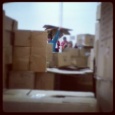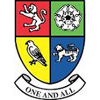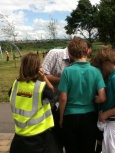Resources: Literacy
- [[Topics/E-safety|E-safety]]
- [[Topics/Blogs|Blogs]]
- [[Topics/E-skills|E-skills]]
- [[Topics/Literacy|Literacy]]
- [[Topics/Curriculum development|Curriculum development]]
- [[Topics/Digital Art|Digital Art]]
- [[Topics/Digital Media|Digital Media]]
- [[Topics/E-safety|E-safety]]
- [[Topics/ICT|ICT]]
- [[Topics/Video|Video]]
- [[Topics/QR codes|QR codes]]
- [[Topics/ICT|ICT]]
- [[Topics/Modelling|Modelling]]
- [[Topics/Scientific literacy|Scientific literacy]]
- [[Topics/Science citizenship|Science citizenship]]
- [[Topics/Reading skills|Reading skills]]
- [[Topics/Writing|Writing]]
Relevant resources
| Blogs | Digital Reporters at Camp Cardboard | |

|
Children using iPads to blog about Cardboard Sculptures This activity is a cross curricula(subject) activity, involving a collaborative(tool) approach, giving children the opportunity to work together on a blog. Children were encouraged to engage in group talk(ta) and discussion(ta) in the classroom to reflect on the activity they were to report on. The activity furthers e-skills(topic) and e-safety(topic) through the use of whole class(ta) participation. The specific art activity provided a great stimulus for the blogging. Equally, however, this approach could be applied to any event in or out of school. The use of blogging and social media gave the opportunity for children to share their ideas with a wider audience, and also gave opportunities for real-time feedback to their work. The use of hand-held technology also enabled active learning(ta) as the portability of the iPads and iPods allowed them to be used outside the classroom.
| |
| Digital Art | Creating Digital Painting using iPads | |

|
Children using iPads to create observational drawings of flowers This activity is a cross-curricular(subject) activity, that gives children to opportunity to work independently on an art activity that also encourages the development of E-skills(topic). This activity encouraged inclusion(ta) as the children's final work was displayed as a collaborative(tool) piece, where all children had the opportunity to make an equal contribution.
In this instance, the children created observational drawings of flowers. However, the subject of the art could change to fit with any topic across the curriculum. The use of hand-held technology could also active learning(ta) as the portability of the iPads and iPods would allow them to be used outside the classroom, thus enabling observational drawings to be made in a range of locations. | |
| Digital Media | 21st century show and tell | |

|
A DEFT case study with Dinnington Comprehensive, Rotherham This cross curricula(i) case study focusses on Digital Literacy, in particular using E-skills(i) to: support skills in writing/recording for a target audience and to improve communication and research skills through the process of creating OER(i)s. The case study illustrates issues involved in the use of video(i) for educational purposes, with an emphasis on students producing and releasing OERs. The method could also be used for self/peer assessment(i) with pupils.
One of the lesson ideas from the case study is available as a separate resource at Creating Instructional Videos. | |
| ICT | Creating Instructional Videos | |

|
Children create instructional videos to upload to YouTube This activity is a cross-curricular(subject) activity with a literacy focus, involving a collaborative(tool) approach, giving children to opportunity to work together to produce a set of instructional resources. Children were encouraged to engage in group talk(ta) and discussion(ta) in the classroom to reflect on what they should include in their videos. The activity furthers e-skills(topic) through the use of whole class(ta) participation. It develops e-safety(topic) skills through discussion of the issues relating to posting digital content online. Children were allowed to choose their own subject for the video, although this could be set by a teacher with a specific outcome in mind, or could be tailored to cover a particular topic or subject. It could, for instance, be used to explain their mathematical thinking(ta).
| |
| ICT | The use of mobile apps for digital story-telling by nursery pupils | |

|
A DEFT case study This cross curricula(i) case study focusses on Digital Literacy, in particular using E-skills(topic) to: explore the creative potential of digital technologies for storytelling and to improve language skills. The case study explores the educational potential of mobile devices to support children's creative involvement with digital literacy. It also explores issues related to pupils using Web2.0 applications to share resources openly.
One of the lesson ideas from the case study is available as a separate resource at Telling Stories about Farm Animals | |
| Literacy | Developing Language in Primary Science | |

|
Language development and the use of appropriate vocabulary(ta) is highlighted as important across the curriculum. Incorporating this consideration into science planning(ta) is important for meeting the target of developing language. The importance of language and talk in science – including through group work(ta), and Whole class(ta) dialogue – is highlighted elsewhere (and in the resource) but includes the ability to explain concepts, understand synthesising ideas (including those from other people and texts), and the need to read and write for different purposes, (including conceptual understanding, data presentation, etc). These are key ideas in communicating the scientific method(ta) | |
| Modelling | Modelling Scientific Writing | |

|
How do we help pupils to express themselves adequately when they write? This resource discusses methods for modelling(ta) scientific writing, and the structure and kinds of language(ta) used in such writing. It provides exemplars and suggests activities to assist teachers to apply these methods to their own practice.
| |
| QR codes | Editing Using QR Codes to Engage Children with Learning | |

|
Children using digital literacy to engage with reading and writing This lesson idea uses technology to promote active learning(ta) as resources were produced to be located and explored in a public park. The early stage of the activity, involving the creation of the resources by the children, required discussion(ta) involving the whole class(ta). Group talk(ta) was also employed as a strategy, with the children agreeing on a narrative(ta) outline relating to the event. The creation of the online materials encouraged development of e-skills(topic).
The later stages of activity, where the children were looking for clues, required them to ask questions(ta) and to take a collaborative(tool) approach to find a solution, based on the digital texts they found. | |
| Reading skills | Reading and discussing popular science articles | |

|
Read. Get the world's view and see how science works for real The resource relates to the importance of:
It can be delivered through a combination of homework(ta) (perhaps to find an interesting article), group work(ta) to explore various articles (perhaps in a carousel), and/or use of ICT(i) including PowerPoint files to encourage students to present an area they are interested in. | |
| Video | Digital Video in ITE | |

|
Student teachers producing digital media This activity is a cross-curricular(subject) activity, involving a collaborative(tool) approach, giving student teachers the opportunity to work together whilst making digital media in the form of films. The activity furthers e-skills(topic) and also helps to develop discussion relating to e-safety(topic). The topic of location provided the stimulus for the videos. Equally, however, this approach could be applied to any topic or subject in school. The use of video also encouraged active learning(ta), with the students developing their own skills through direct participation in the creation process.
| |
| Writing | Developing Writing | |

|
Understanding the importance of writing This resource is a larger DfES document on writing(topic) and language(ta) development, from which more focused resources (including Establishing Purpose for Writing) are drawn.
| |

